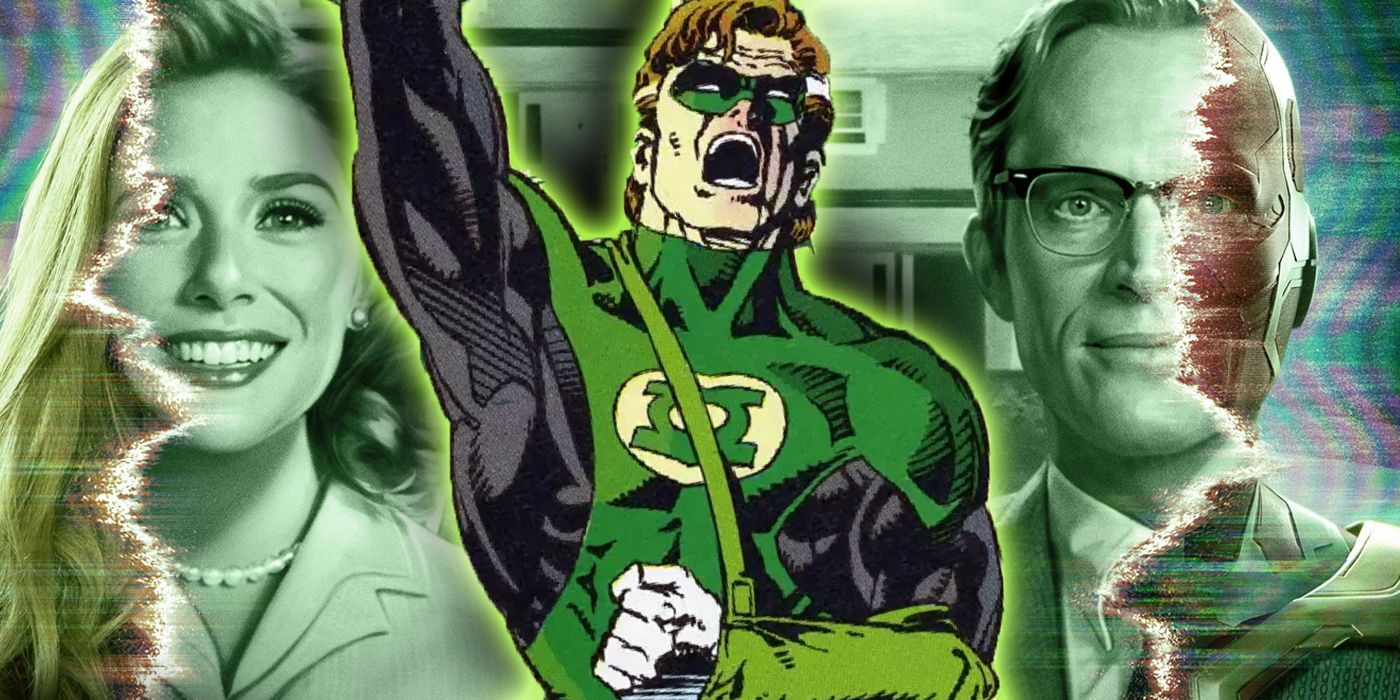WandaVision was a major success for Marvel, in no small part due to its exploration of grief and trauma. Seeing the Scarlet Witch deal with feelings of loss through unconventional means was moving and entertaining all at once. In the 1990s, Green Lantern explored similar themes of grief, albeit in a much darker manner than WandaVision.
This traumatic, game-changing chapter in the world of Green Lantern took place in 1994’s Green Lantern #48-50, by Ron Marz, Bill Willingham, Fred Haynes and Darryl Banks. Right before “Emerald Twilight,” Hal Jordan’s hometown of Coast City had been destroyed by Mongul and the Cyborg Superman in 1993’s Superman #80, by Dan Jurgens. Mourning the loss of his city, Hal used a tremendous amount of willpower to recreate Coast City and his memories of everyone he knew.
Hal’s actions here were very similar to those of the Scarlet Witch in WandaVision. After losing the Vision, not to mention her parents and her brother Quicksilver, Wanda Maximoff used her powers to turn the town of WestView into a land resembling an old sitcom. Unlike Hal, however, Wanda used real people for her experiment, turning the citizens of WestView into old sitcom characters.
Moreover, Hal’s experience in recreating Coast City took a much darker turn than WandaVision did. Hal’s power ring reached its time limit, leading to the dissolution of his fabricated Coast City. To compound his grief, Hal was reprimanded by the Guardians for using his ring for personal gain. Angered, Hal went to Oa, seeking more power to recreate his home. In the process, Hal murdered many of his fellow Green Lanterns and almost all of the Guardians.
Absorbing all of the power from the Central Power Battery, Hal became the villain known as Parallax. Hal’s actions were retroactively attributed to the fear entity, Parallax, in 2005’s Green Lantern: Rebirth #3, by Geoff Johns and Ethan Van Sciver. Even so, “Emerald Twilight” was much darker than WandaVision, portraying the destruction of the Green Lantern Corps, the death of several major Green Lanterns, and above all, Hal Jordan’s fall from grace.
WandaVision, however, culminated in the Scarlet Witch seeing the error of her ways and removing the enchantment around WestView, freeing its citizens. While Wanda did lose her family, she made a sacrifice for the greater good and moved on with her life, effectively making peace with her own personal loss.
Hal’s fall from grace was much darker than WandaVision, resembling the Scarlet Witch from the comics more than the MCU. The comic book Wanda went through her own sort of “Emerald Twilight” during 2004’s Avengers #500-503, by Brian Michael Bendis, David Finch and Olivier Coipel. Suffering a nervous breakdown after remembering the loss of her children, the Scarlet Witch lost control of her powers, killing several of her fellow Avengers and effectively disbanding the team. This was quite different from WandaVision, resembling more of the tragic, violent events of “Emerald Twilight.”
When Green Lantern is brought into the DCEU, it’s unlikely that the movies will take the same route as “Emerald Twilight.” Removing the Green Lantern Corps from the DCEU would be a bold move, but it would also be shocking to see them die off at the hands of Hal Jordan, often considered the greatest Green Lantern.
If anything, Hal would probably be given a similar character arc to the Scarlet Witch, who almost became a villain without even realizing it. For quite a while, Wanda had no idea how she created WestView, making her a little more sympathetic. Additionally, the Scarlet Witch didn’t kill her teammates like she did in the comics, making her less of a villain.
In Hal’s case, perhaps he could battle the Green Lantern Corps for a while, or even go rogue, without destroying the corps like he did in “Emerald Twilight.” Following the MCU’s lead, the DCEU could try to adapt “Emerald Twilight” in a way that removes some of Hal’s more heinous acts. Giving Hal more time to grieve and explore his own personal trauma before becoming a villain would be helpful for his development as well.
Seeing Hal lash out in grief would be perfectly sympathetic, but destroying the Green Lantern Corps would send him into irredeemable territory. In the comics, Hal wasn’t fully redeemed until Parallax was retconned into a fear entity and the Green Lantern Corps restored. If the films tried to adapt “Emerald Twilight,” Hal Jordan’s feelings of grief and trauma would need to be emphasized and his crimes toned down a bit.
About The Author
